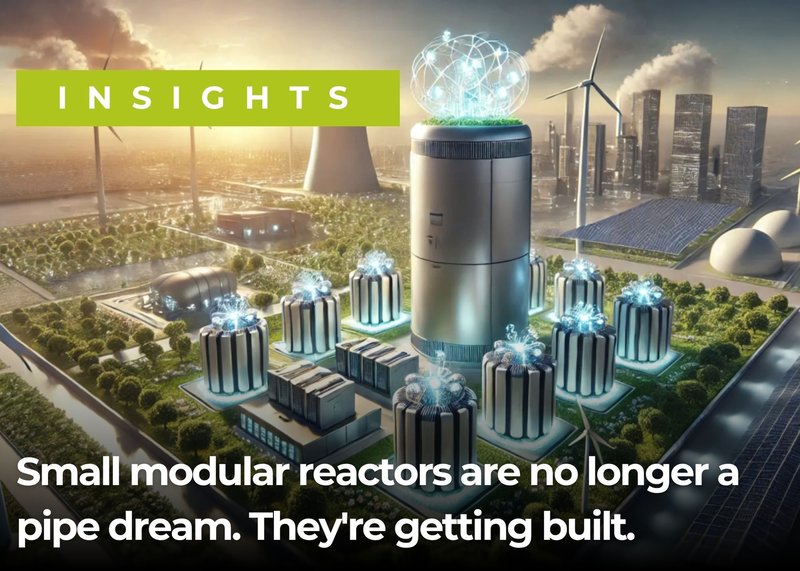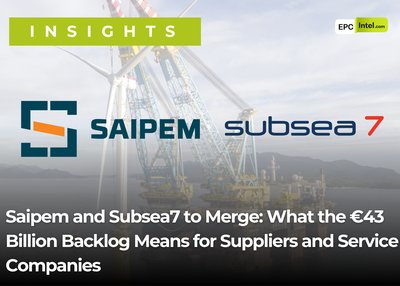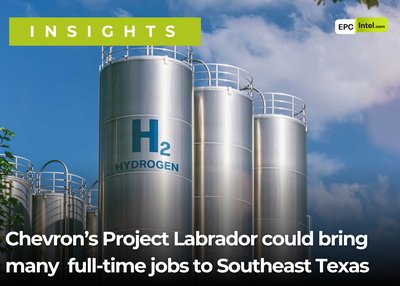After years of conceptual hype and regulatory slog, Small Modular Reactors (SMRs) are moving beyond PowerPoint slides and into procurement schedules. The latest proof of this came from Oklo, a California-based nuclear startup, which just signed a major cooperative agreement with the U.S. Department of Defense. The deal puts Oklo’s Aurora Powerhouse SMR design on the fast track for deployment at a military installation. It gives the company real funding and, perhaps more importantly, real customers.
That makes Oklo one of the first players in the SMR space to go from pitch deck to buildout. But they are not alone.
Across the U.S., SMR projects are picking up momentum with new commercial models, public-private partnerships, and EPC contracts surfacing almost monthly. According to EPCIntel.com, which tracks energy infrastructure projects and contracting activity, over a dozen SMR-related contracts have been announced or awarded in the past 12 months. These include site development, engineering packages, fuel supply agreements, and early-stage construction support.
Oklo’s defense deal: small reactor, big signal
The Oklo-DOD agreement is a watershed moment for the microreactor subset of SMRs. While many competitors like NuScale and GE Hitachi are designing 50 to 300 MWe reactors for grid-scale deployment, Oklo’s 15 MWe Aurora design is targeting remote, high-resilience use cases. These include military bases, mining operations, or Arctic towns.
Under the new agreement, Oklo will design, license, and deploy an Aurora reactor at Eielson Air Force Base in Alaska. This is part of the Pentagon’s broader effort to secure reliable, domestically produced clean power. Energy infrastructure is increasingly viewed as a national security issue.
For Oklo, this isn’t just a contract. It’s a proof point. The company has been pitching its ultra-compact reactor design since it spun out of Y Combinator in 2013. Now, with both private capital and a public mandate, Oklo looks set to become the first microreactor vendor to deploy at a federal facility. It helps that the company also just went public via a SPAC merger, giving it access to fresh capital as it races toward first-of-a-kind (FOAK) deployment.
The SMR field: a small crowd with clear front-runners
While Oklo makes headlines with its DOD deal, the broader SMR market is rapidly maturing.
NuScale Power remains the most advanced in terms of U.S. regulatory approvals. However, its Utah Associated Municipal Power Systems (UAMPS) project recently took a hit when cost escalations pushed it past the point of commercial viability. Still, NuScale holds a strong position with designs licensed by the NRC and multiple MOUs signed internationally. Despite that, NuScale still has a strong pipeline and is a high-profile international play. The company is leading an ambitious SMR project in Romania, at the Doicesti site, in partnership with Nuclearelectrica and with backing from the U.S. Export-Import Bank and U.S. Trade and Development Agency. This project is currently the most advanced international deployment of a U.S.-designed SMR and has the potential to put NuScale back at the front of the global pack.
GE Hitachi, with its BWRX-300 reactor, is in a strong second position. Its Ontario Power Generation project at Darlington, Canada, backed by Bechtel for EPC, is now slated to be the first grid-connected SMR in North America. Construction has already begun on early site work.
Other notable entrants include X-energy, which is focused on high-temperature gas reactors (HTGRs) and has received significant DOE support, and Holtec, which is repurposing shuttered nuclear plant sites for SMR deployment. All of these players are navigating the long haul from prototype to production, and many are already feeding contracts into the supply chain.
The EPC market is heating up
The clearest sign that SMRs are entering real territory is that EPC contracts are starting to move.
EPCIntel.com, a specialist database tracking global energy contracts and supply chain activity, now tags SMRs as a distinct category within its nuclear project listings. As of mid-2025, the database includes over $2 billion in planned and awarded SMR-related contracts globally. That is a significant jump from just ~$500 million two years ago.
These contracts span a range of scopes including Front-end engineering and design (FEED) for SMR-specific site layouts, modular fabrication and transport logistics, fuel cycle infrastructure (including HALEU supply), and grid interconnection studies and upgrades
Suppliers ranging from heavy equipment manufacturers to civil construction firms are taking early positions in the SMR ecosystem. Some are doing so through direct awards, others through strategic partnerships. Notably, Bechtel, Jacobs, BWXT, and Fluor have all announced or bid on SMR-related scopes in the past year.
Not just a technology bet. A new market model.
What’s emerging is a fundamentally new model for nuclear power. These are smaller reactors with standardized designs, shorter construction timelines, and flexible deployment profiles. Unlike gigawatt-scale plants that require a decade and billions of dollars to bring online, SMRs offer the tantalizing possibility of sub-5-year build schedules, modular deployment, and distributed siting. All of this comes without sacrificing the 90 percent-plus capacity factor that makes nuclear the envy of other baseload technologies.
The market still faces headwinds. Fuel supply, licensing complexity, and cost competitiveness are unresolved. But with defense applications driving the first wave of deployment and commercial utilities closely watching, SMRs are finally shedding the “future tech” label and becoming something more concrete and contractable.
The next time someone tells you nuclear is too slow to build, just point them to the EPC data. SMRs are finally happening.




